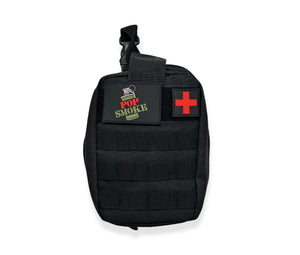Israeli Troop Withdrawal Signals Shift in Gaza Conflict Dynamics
Israeli forces are undergoing a notable withdrawal from the Gaza Strip, marking the first significant reduction in troops since the conflict’s initiation.

This adjustment aligns with an increased focus on the primary city in the southern half of Gaza,
indicating a potential de-escalation of hostilities in specific regions.
The troop drawdown occurs amid heightened pressure from the United States for Israel to shift towards
lower-intensity combat, accentuated by Secretary of State Antony Blinken’s impending visit and the
recent Biden administration approval of an emergency weapons sale.
Gear Spotlight: Relevant to This Story


The troop withdrawal announcement precedes Secretary of State Antony Blinken’s visit and follows the
Biden administration’s decision to bypass Congress for an emergency weapons sale to Israel.
While this reduction in troops may signify a change in the intensity of fighting in specific regions, intense
battles persist in areas like the southern city of Khan Younis and central territories. Israel remains
steadfast in its commitment to achieving its war objectives, including dismantling the 16-year rule of
Hamas in Gaza.
The military, in a statement on Monday, disclosed that five brigades, comprising several thousand
troops, would be withdrawn from Gaza in the coming weeks for training and rest.
Despite the troop movement, Rear Adm. Daniel Hagari, the army spokesman, stressed the prolonged
nature of the conflict and refrained from confirming whether this decision signaled a new phase in the
war.
Since the conflict’s initiation due to Hamas’ October 7 attack on southern Israel, the toll on both sides
has been severe. Israel’s comprehensive air, ground, and sea offensive has resulted in over 21,900
casualties in Gaza, with the Health Ministry reporting that two-thirds were women and children. Israel
contends that more than 8,000 militants have been killed, attributing the high civilian death toll to
Hamas’ embedding within residential areas.
The war has displaced 85% of Gaza’s 2.3 million residents, leading many to seek refuge in Israeli-
designated safe areas, despite some of these being targeted by military strikes. Palestinians now face a
pervasive sense of insecurity in the besieged enclave.
INTENSIFIED CLASHES IN THE SOUTH
Khan Younis, the southern city, remains a focal point with reported airstrikes, shelling, and clashes
between Israeli forces and the Islamic Jihad militant group.
The Palestinian Red Crescent reported casualties following a strike in Khan Younis, emphasizing the
ongoing human cost of the conflict. Urban refugee camps in central Gaza also witness intensified
combat as Israel expands its offensive.
Gaza’s Health Ministry reported 156 deaths in the past day alone, reflecting the relentless nature of the
conflict. Simultaneously, the Israeli military confirmed the killing of Adel Mismah, a regional commander
of Hamas’ elite Nukhba forces, in the central city of Deir al-Balah.
Despite the troop withdrawal, Israel maintains that the war will endure for months, arguing the need to
eliminate militant infrastructure and prevent future attacks by Hamas. The decision to resist
international calls for a long-term ceasefire underscores Israel’s stance that such an agreement would
amount to a victory for Hamas.
Shlomo Brom, a retired brigadier general, suggests that the troop changes may be a response to U.S.
pressure, indicating a shift in Israel’s operational approach.
As the conflict continues, public support for Israel’s war aims persists, even as the toll on soldiers’ lives
rises. Over the weekend, the military reported 172 soldiers killed since the ground operation began,
with friendly fire and equipment malfunctions contributing to the losses.













